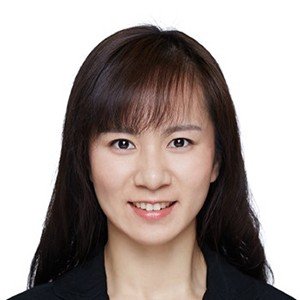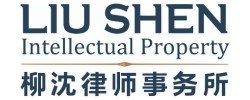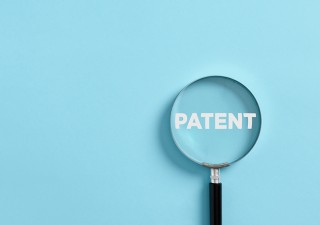Patent invalidation procedure in China provides a chance for the public to challenge the validity of a patent. A general picture operates like this: a patent invalidation request, including the invalidation reasons and related prior arts, is examined by the Patent Reexamination and Invalidation Department of the Patent Office (referred to as PRB), which may issue an invalidity decision first. The request then undergoes judicial review by the Beijing IP Court and Supreme Court IP Tribunal as the courts of first and second instance. Although the second instance is final and effective, there is still a further chance for retrial by the Supreme Court Administrative Department, which is not automatic and has an extremely low chance of reversal. Understanding the recent developments in the invalidity procedure and criteria on evaluating the patentability in practice is very important for both patentees and petitioners.
Statistics in the invalidity procedure and the overall trend
As revealed in 2019 Patent Office Annual Report issued on May 13 2020, in 2019, a total of 6,015 invalidity requests were accepted by the PRB, with 1,403 for invention patents, 2,499 for utility model patents and 2,113 for design patents. Regarding invention patents, the complete invalidation rate was 31.7 percent, the partial invalidation rate was 14.5 percent and the rate declared valid rate was 53.8 percent. Regarding utility model patents, the complete invalidation rate was 45.6 percent, the partial invalidation rate was 13.6 percent and the rate declared valid was 40.9 percent. Regarding design patents, the complete invalidation rate was 47.9 percent, the partial invalidation rate was 1.2 percent and the rate declared valid was 51.0 percent. The average trial cycle is five months.
The above statistics were officially disclosed to the public for the first time. The rates for invention patents and utility models are consistent with public expectations since the invention patent is subject to substantive examination; therefore the validity of inventions is generally stronger than the utility model. Further, the trial cycle is an average number, and is actually different for three patent types, with six to nine months for inventions and three to four months for designs.
On appeal, the reversal rate is generally around 15 percent for the first instance and around 5 percent for the second instance, which means that the invalidity procedure before the PRB is very important, and it is rather difficult to reverse the unfavorable invalidity decision in the legal proceedings. Moreover, the trial cycle in the courts can run more than two years, challenging the patience of the losing party.
In practice, the most powerful invalidation reason is lack of inventiveness based on the combination of prior arts, with over 95 percent in all invalidation cases successful by this reason. The challenge against the novelty is not easy since examination on novelty is rather strict. A minor difference between the patent and the prior arts may be sufficient to cause the novelty attack untenable. There are also some formality issues, including indefinite protection scope of the claims, insufficient disclosure, amendments extending beyond the original disclosure and lack of essential features, which sometimes may be useful to invalidate the patent, but which are far less weaker than the inventiveness attack. The Supreme Court issued a high-profile invalidity retrial judgment in March 2020 to reverse the second instance effective judgment, in which insufficient disclosure of the “game server” feature in a patent dispute between Apple and Zhizhen Network Technology became a focus. The Supreme Court said that the game server feature is not the inventive point of the patent, therefore even if the patent description does not clearly describe the details of the game server, those skilled in the art can still understand what a game server is, and this should not be considered as lack of sufficient disclosure.
There is no limit on the number of pieces of prior art which can be submitted. Based on our experience, four to eight pieces of prior art is the general practice, and more pieces of prior art would cause the case too complicated and distracted. Too many prior arts may give the PRB too much pressure and, on the other hand, show the that the petitioner lacks confidence in its claim. Although the petitioner may provide countless combinations of prior art, the PRB generally selects one or two sets of combinations as the focus when evaluating inventiveness. There is also no limit on how many rounds of invalidity challenges can be launched.
A brand-new Supreme Court judicial interpretation bringing changes to invalidation procedure
A brand-new Supreme Court judicial interpretation on adjudicating patent invalidity
cases was issued effective on September 12, 2020, binding for the PRB and courts in the invalidation procedure. This judicial interpretation summarizes the Supreme Court opinions in precedent cases on evaluating the patentability in legal practice.
One of the focus of this judicial interpretation is to solve the “bouncing-back” problem between the PRB and courts. This problem arises because in the validity decision, when the patent is invalidated, the PRB generally only comments on one set of prior art combinations, leaving other invalidation reasons unsolved. If such comment is reversed by the court, the decision goes back to the PRB, and the PRB will then issue a new decision based on another combination of prior art. If this new combination is also reversed by the court, the decision goes back to the PRB for the next round, prolonging the whole procedure and leaving the patent right pending for a long time.
Articles 23 and 25 contribute to solve this “bouncing-back” problem. According to the Article 25 of this judicial interpretation, in the situation that all invalidation reasons and evidence are commented upon in the invalidity decision when the patent is completely invalidated, if the court considers them to be untenable, the court has the authority to reverse the decision and decide the patentability by itself, while in past the decision has had to go back to the PRB for a second-round decision. Therefore, this article may reduce the cycles between the PRB and the court, improving efficiency. In Article 23, although there may be some issues ignored and unsolved in the invalidity decision, if such omitted issues do not have adverse influences on the examination on invalidity reasons, such omissions shall not cause the invalidity decision to be reversed. The spirit of both Article 23 and 25 are actually consistent in reducing the back-and-forth bouncing of the invalidity decision between the PRB and the court so that the pending status of a patent would not last as long.
Another highlight is Article 3, which involves statements of the patentee on claim terms in the infringement proceeding into the invalidity procedure to define such claim terms. In the past, only the interpretation of claim terms in the invalidity procedure can be used at the infringement side. This is certain to enhance the estoppel and give more constraint to the patentee. Further, Article 2 excludes the prosecution history from the basis to interpret the claim terms, which means that the statements of the patentee when responding to the office action shall not be used to limit the interpretation of the claim terms in the invalidity procedure.
Tips to obtain a favourable invalidity decision
Holding “inventive concept” of the patent
The inventive concept is one of the fundamental elements to evaluate the patentability. Sometimes, it is even understood by the PRB as the “avatar” of the whole technical solution, and if the inventive concepts of the patent and the prior arts would be similar, it is highly likely that the patent may be considered as being disclosed by the prior art, even if there are some other minor differences. The underlying reason may be that once the inventive concept already appears, the inventor may be naturally guided to select particular technical means to realize the inventive concept. The inventive concept is so important that it generally runs all the way through the proposal of the technical problems solved by the invention, the selection of technical means and the realization of technical effects.
Invalidity decision No. 41958 is a patent related to a restaurant service system, aiming at reducing manpower and time consumption in the traditional system. In the patent, a conveying system is provided with a rail system that uses gravity to transport meals from the kitchen area to the dining table. The key difference between the patent and the closest prior art is that the rail system in the patent is extended to the customer’s dining table, while the prior art only transports the food to the service counter and then the waiter in turn transports it to the table. However, both of them use a rail system that relies on gravity.
From a glance, the patent seems to be very similar to the prior art, except the last bridge between the rail system and the customer. On the contrary, the PRB believes that there is no inspiration from the prior art to arrive at the patent for the following reasons. First, the manual service mode has long been existing in the catering industry, and from the prior arts, such manual service cannot be cancelled even in the current prior art. Second, the inventive concepts are quite different between the patent and the prior art. Although the rail system is disclosed to transport food in the prior art, it actually solves the problem of lack of space in catering services, thereby a fixed track is established between the kitchen area and the service counter to maximize the utilization of space. This inventive concept is not relevant to a rail system directly from the kitchen area to the dining table, or extension the track to the dining table, which is giving convenience and a new experience to the customers.
In view of this, attention should be paid greatly to the inventive concept no matter from the patentee or the petitioner. Even though the technical details may seem similar, no judgment should be made too early. The inventive concept is the real “golden finger” behind the scene to dominate the orientation of the invalidity procedure.
Taking advantages of “prior use” evidence
Prior art evidence is the most important in the invalidity procedure. Patent documents are the most frequently used evidence. However, if such patent documents could not be found, prior use evidence might also be relied on to attack the inventiveness. One of the prerequisits is that the market date or disclosure of such prior use products should be proved by clear and convincing evidence and challenges on the formalities of such prior use evidence can be dealt with in a convincing way.
In invalidity decision No. 41875, several air conditioners are used as prior use evidence. However, these air conditioners were purchased from second-hand markets, and there are different bar codes attached to the air conditioner bodies than what were attached by the manufacturer. On the premise that one air conditioner should have only one bar code to prove its identity, the PRB held that having different bar codes causes doubt as to whether the air conditioners were reassembled or repaired, and therefore it could not be proven that the air conditioners maintained the original structures they had when they first appeared in the market, and are thus not qualified as a basis to comment upon the inventiveness of patent.
Another invalidity decision, No. 39655, is related to a software patent to input emoji into a phone. An operation process of a phone is provided in the manner of written record to the PRB to prove that such emoji input method has existed before the patent application date; however, this phone itself was not submitted. The PRB believed that merely reviewing the operating process in the written record was not sufficient to find the technical details of the operation of the phone, especially in the cooperation of network and user device, and as such, it is impossible to understand whether such operation is made by the phone itself or the network system. The PRB recommended that for such dynamic operation, a better way would be to show the phone and the whole process during the oral hearing.
In summary, prior use evidence should be prepared very carefully, especially for its formalities. The time when such prior products were put into the market should be proven by solid evidence. Generally, the commercial record and invoice accompanying the products are necessary elements. Some other secondary evidence, such as advertisement of the products, are also helpful to improve the credibility. Another difficulty is to prove that the structure or software in such products have not been repaired or updated or changed. One possible way is to provide several products with the same structure so that they may be corroborating with each other for integrity.
Presenting perfectly in the oral hearing
An oral hearing is held for both parties to present their cases to the PRB. This is a perfect opportunity for the patentee to introduce the patent technology to convince the PRB about its advancement and the differences from the prior arts. Slides can be used in the oral hearing as a guide for the arguments. But literal presentation alone is never enough; video or animation is a good aid for a better and direct understanding, especially showing the creative efforts needed in the progress of technical developments in the patent-related field. Such progress can also be used to prove that those skilled in the art could not readily to arrive at the patent.
For both parties, professional knowledge from both legal and technical perspectives should be presented to show credibility. The PRB always trusts in the parties with honesty, good faith and professionalism in technology, and these actually also show respect for the invalidity procedure.










